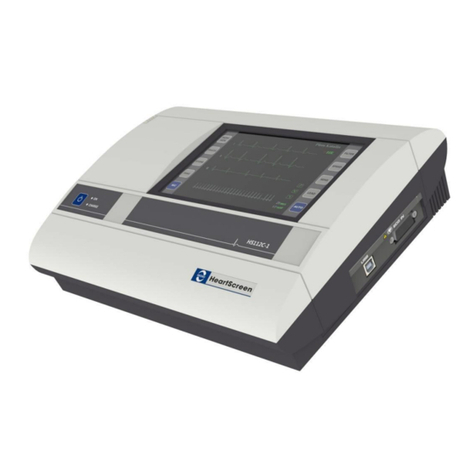
9.1.2.
Running the program ................................................................................................ 31
9.1.3.
Automatic printing after running the program ......................................................... 31
9.1.4.
Aborting the program ............................................................................................... 31
9.2.
Obtaining an analysis/diagnosis — the DIAG program ................................................ 32
9.2.
Obtaining an analysis/diagnosis — the DIAG program ................................................ 32
9.2.1.
Starting the program ................................................................................................. 33
9.2.2.
Running the program ................................................................................................ 33
9.2.3.
Automatic printing after running the program ......................................................... 34
9.2.4.
Aborting the program ............................................................................................... 34
9.3.
Performing a rhythm analysis in the STORE program ................................................. 34
9.3.1.
Starting the program ................................................................................................. 36
9.3.2.
Running the program ................................................................................................ 36
9.3.3.
Parameters calculated during arrhythmia analysis ................................................... 37
9.3.4.
Statistics calculated form the results ........................................................................ 38
9.3.5.
Automatic printing after running the program ......................................................... 38
9.3.6.
Aborting the program ............................................................................................... 38
9.4.
Printing rhythm events .................................................................................................. 39
9.4.1.
Aborting the program ............................................................................................... 39
10.
Using the device menu system ......................................................................................... 40
10.1.
Entering the menu system ........................................................................................... 40
10.2.
Entering the sub-menus ............................................................................................... 41
10.3.
Parameter modification ............................................................................................... 41
10.4.
Returning to monitoring mode .................................................................................... 41
11.
Managing stored records (Catalogue) .............................................................................. 42
11.1.
Displaying the catalogue ............................................................................................. 42
11.2.
Deleting a record ......................................................................................................... 43
11.3.
Printing all record data ................................................................................................ 43
11.4.
Managing record data .................................................................................................. 44
11.4.1.
Managing the ECG record ...................................................................................... 44
11.4.2.
Managing the rhythm record .................................................................................. 45
11.4.3.
Managing the analysis/diagnosis results................................................................. 47
12.
Entering patient data ......................................................................................................... 50
12.1.
Patient data of the last 20 patients ............................................................................... 50
12.2.
Importing patients from the hospital network (optional) .............................................. 51
12.3.
Editing the name .......................................................................................................... 51
12.4.
Entering the patient identifier ...................................................................................... 52
12.5.
Guided parameter entry ............................................................................................... 52
12.6.
Entering the date of birth ............................................................................................. 52
12.7.
Editing the patient’s gender (Sex) ............................................................................... 52
12.8.
Weight height blood pressure HR limits time/date ................................................. 52
12.9.
Exiting the patient menu .............................................................................................. 53
13.
Device setup ..................................................................................................................... 54
13.1.
Printing ........................................................................................................................ 55
13.2.
Diagnosis ..................................................................................................................... 55
13.3.
Storage ......................................................................................................................... 55
13.4.
Language ..................................................................................................................... 56
13.5.
Filters ........................................................................................................................... 56
13.6.
Others .......................................................................................................................... 56
14.
Device warnings ............................................................................................................... 57
15.
Computer connection ....................................................................................................... 57










































